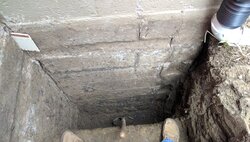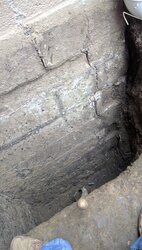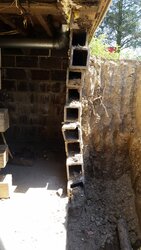All the walls but this one had anchors installed, soil is terrible clay. There is a big straight horizontal on the left and a jagged one on the right, think from previous owners dumping downspout 1 foot away from house and clay pushing against wall.
Ive dug down to the footer and looking for the best way to fill and seal. Planning on putting gravel down then topsoil over it


Ive dug down to the footer and looking for the best way to fill and seal. Planning on putting gravel down then topsoil over it


Last edited by a moderator:


